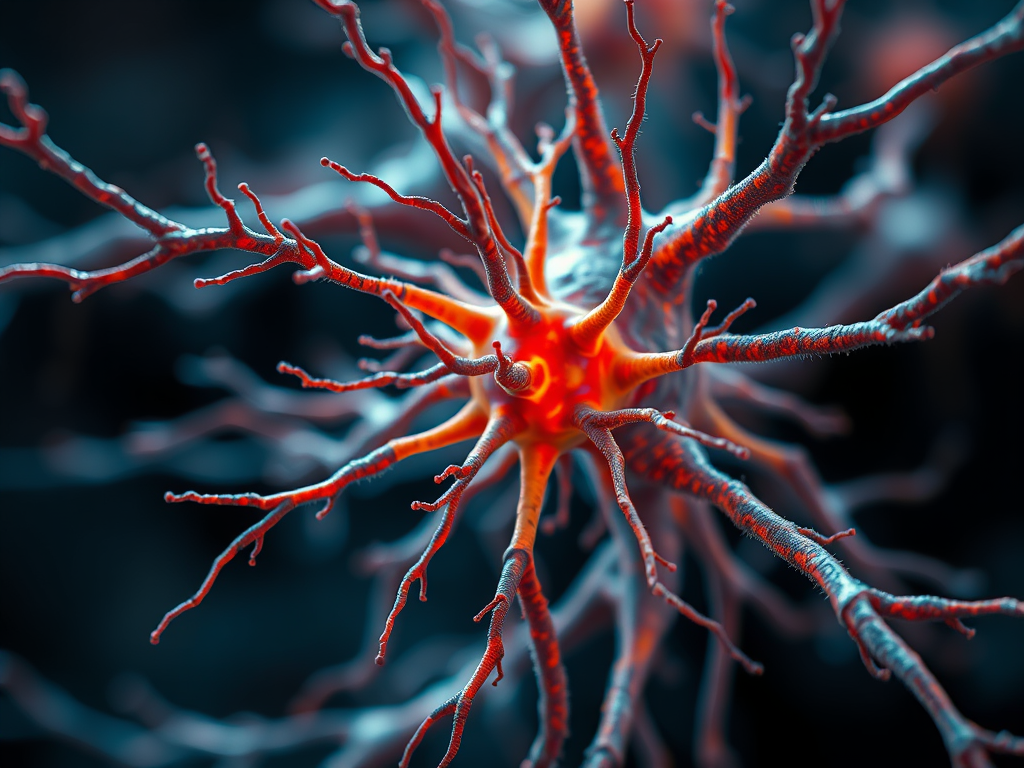Inspired by Chen et al 2024.[1]
EA – electroacupuncture
CIPN – chemotherapy-induced peripheral neuropathy
IF – impact factor
AAV – adeno-associated virus
RVM – rostral ventromedial medulla
DREADDs – designer receptors exclusively activated by designer drugs
IP3 – inositol triphosphate
hPMCA2 – human plasma membrane Ca2+ channel
ZP – Zongping (an extra point 1cun below ST36)– key to acronyms
Despite acupuncture having a very long research history in the field of pain, papers on the subject do not often pop up in the journal of the same name – Pain (IF 7.4).
This is a paper investigating part of the mechanism of EA in pain outcomes related to CIPN and it comes from a group in Wuhan, China.
This is the first time I have highlighted a laboratory paper on an animal model of CIPN. The model was produced by intraperitoneal injection of paclitaxel (2mg/kg) every other day for a total of 4 injections. In part of the experiment, control animals received saline injections in the same sequence. The model created mechanical allodynia in the limbs in a similar manor to the symptoms we see in patients undergoing chemotherapy with certain agents including those that target the microtubular network such as taxanes. One difference is that the problem is always worse in the feet of humans rather than the hands because the legs, and therefore the nerves supplying them, are longer than those in the arms. This is not the case in the rodent model, where forelimbs and hind limbs (or thoracic limbs and pelvic limbs) are a more similar length.
EA was applied daily for 4 days from day 4, which was the day of the third intraperitoneal injection of paclitaxel. Pairs of needles at ST36 were used in the real EA group and similar pairs at the root of the tail (presumably into fat tissue rather than muscle tissue) were used in the control group. EA was applied at 2Hz for 20 minutes at 0mA, 0.1mA, 0.5mA, and 1.0mA, and a pulse width of 500μs.
The 0.5mA setting had the best effect and this may have been because the mice were treated awake, and the pulse width was on the top end of the spectrum. For context, we generally use 100μs to 200μs pulse widths in human patients.
Interestingly, the EA at ST36 did not have any effect on allodynia in the forelimbs, which runs somewhat in contrast to the results of EA in humans with carpal tunnel syndrome – see: Rewiring the brain with acupuncture.
To examine part of the mechanism of action of EA in CIPN, the team used techniques that we have covered here before involving the injection of AAVs with genetic material encoding fluorescent proteins to monitor neuronal activity in vivo and other proteins (such as DREADDs) to manipulate that activity – see: KOR and depression after CSDS; and: EA for PSD.
The AAVs were injected into the RVM to allow monitoring of astrocyte activation and to manipulate their activity. In this way, the team were able to demonstrate that paclitaxel injections to induce the CIPN model resulted in astrocyte activation in the RVM, and EA was able to reduce this activation and relieve hind limb allodynia. Artificially restricting astrocyte activation by using IP3 knockout mice or by injecting (via AVV) the gene for a human transmembrane Ca2+ channel (hPMCA2) effectively reduced allodynia in the model. We are not told this, but my assumption is that unlike EA at ST36, these latter methods would have worked on both forelimbs and hind limbs. Well, the IP3 knockout would have, but the AAV injection of hPMCA2 would be more dependent on precise location.
Before you get the idea that this either of these might be better than EA, remember that astrocyte activation is not always a bad thing. Protoplasmic astrocytes in grey matter clear 80% of synaptic neurotransmitters (such as glutamate) and are coactivated with synaptic activity. In some parts of the brain a single protoplasmic astrocyte is estimated to make intimate contact with 140k synapses and occupy a territory of 0.06mm3.[2] If all astrocyte activation was supressed across the brain, I doubt it would be a good thing. Also, the AAV gene implantation method requires an injection into the brain!
The results of this mechanistic paper along with the latter string of thought has led me to consider that I might add EA in the arms as well as the legs of my CIPN patients – I often only use ST36 to ZP EA bilaterally, since the leg symptoms are universally worse in humans (due to the relatively longer nerves, which are presumably more vulnerable to reduced function in the microtubular network).
More discussion will be had on the webinar tonight.
References
1 Chen X, Mi W, Gao T, et al. Astrocytes in the rostral ventromedial medulla mediate the analgesic effect of electroacupuncture in a rodent model of chemotherapy-induced peripheral neuropathic pain. Pain. Published Online First: 15 October 2024. doi: 10.1097/j.pain.0000000000003433
2 Goenaga J, Araque A, Kofuji P, et al. Calcium signaling in astrocytes and gliotransmitter release. Front Synaptic Neurosci. 2023;15:1138577. doi: 10.3389/fnsyn.2023.1138577
Published
